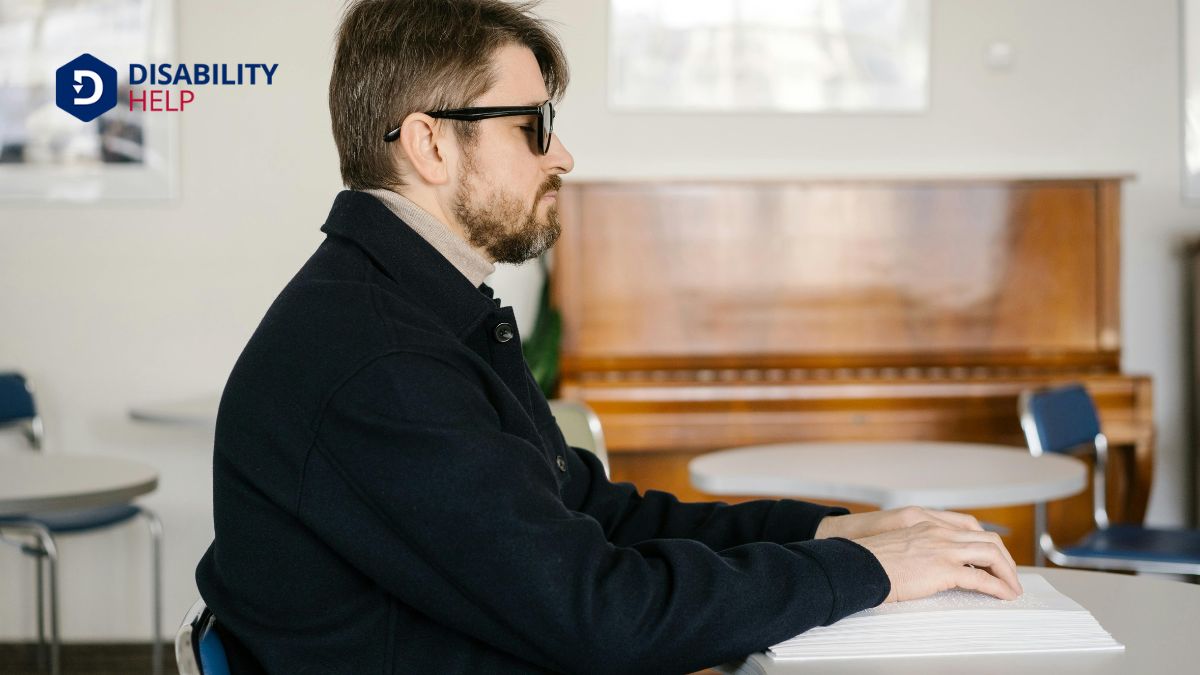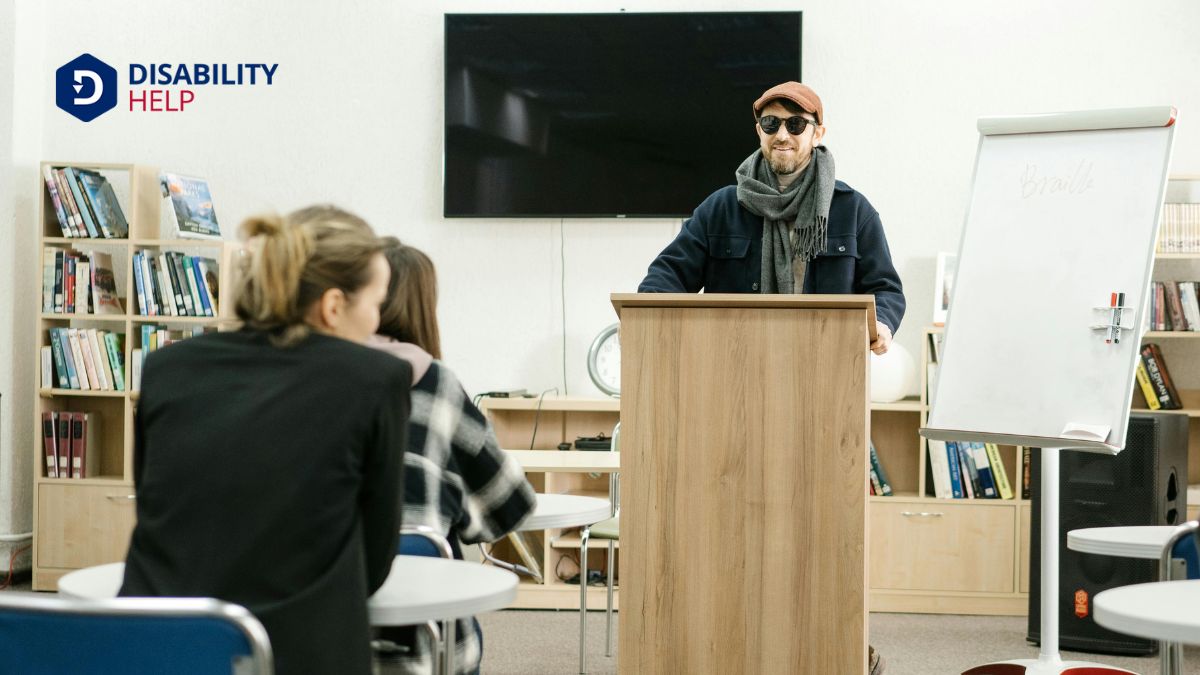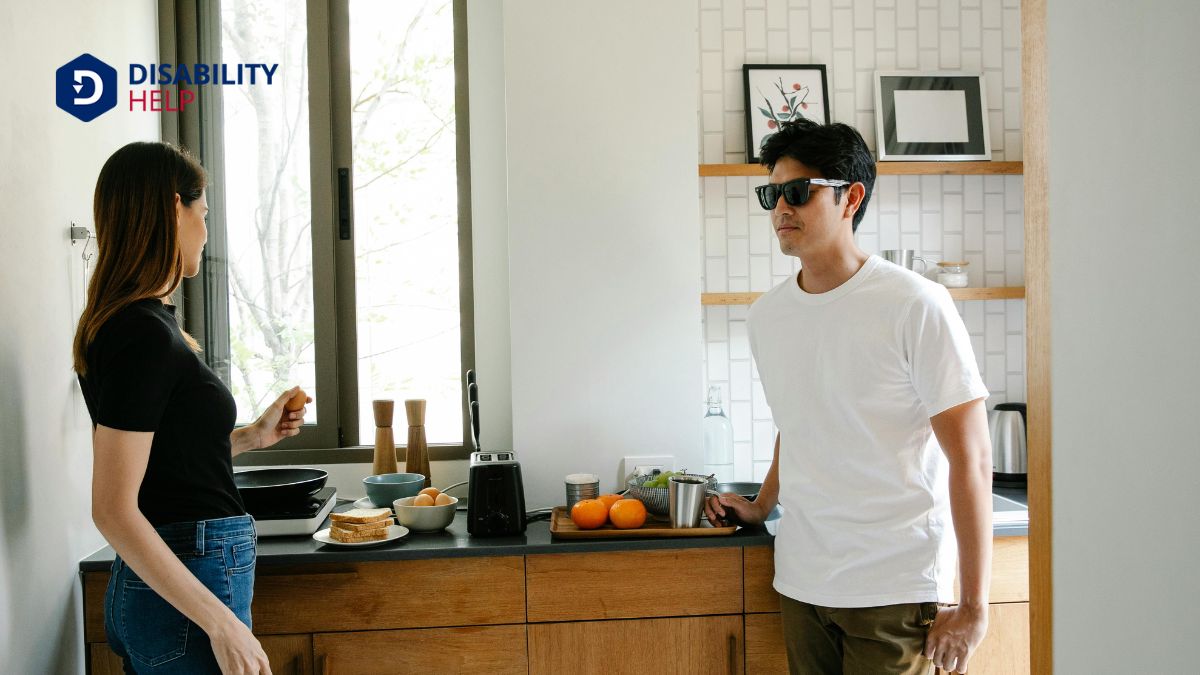When we volunteer in disability advocacyEfforts and services aimed at protecting and promoting the rights and interests of individuals with ..., we should focus on our commitment to inclusionThe practice of creating environments in which any individual or group can be and feel welcomed, res..., guarantee web accessibilityThe design of products, devices, services, or environments to be usable by people with disabilities...., and optimize volunteer opportunities. We need to create accessible content, offer flexible volunteering options, and respect diverse needs. Understanding the challenges faced by individuals with disabilities and collaborating with local organizations enriches our advocacyThe act of arguing in favor of, supporting, or defending the rights and interests of individuals or ... efforts. Inclusive practices and a welcoming atmosphere promote engagement and fresh perspectives. By fostering a culture of inclusivity and flexibility, we can make a real difference. Let's explore how these strategies can transform our efforts into impactful advocacy.
Key Takeaways
- Engage directly with disabled individuals to understand their challenges and perspectives.
- Ensure all communications and materials comply with WCAG for accessibility.
- Offer flexible and remote volunteering options to accommodate diverse needs.
- Provide disability-inclusive training to volunteers to address biases and stereotypes.
- Collaborate with local disability organizations to gain insights and enhance advocacy efforts.
Commitment to Inclusion
One key aspect of effective disability advocacy is a genuine commitment to inclusion. We can't just discuss inclusion; we need to actively demonstrate it.
One way to do this is by developing a thorough DiversityThe inclusion of individuals from a wide range of backgrounds, including people with disabilities., EquityFairness and justice in the way people are treated, especially in the allocation of resources and op..., and Inclusion (DEI) statement that specifically welcomes individuals with disabilities to volunteer with our organization. This statement should be more than a general non-discrimination note—it must clearly outline our dedication to accessibility.
By including specific statements on accessibility for volunteering, we show that we truly value the contributions of individuals with disabilities. We need to make sure our DEI and accessibility statements are easily accessible on our volunteer web pages. This visibility sends a powerful message that everyone is welcome and supported.
In addition, let's use our volunteer registration forms to gather information about the accessibility needs of our volunteers. This allows us to make any necessary adjustments and provide the best possible experience for everyone involved.
Inclusive Practices

When we embrace inclusive practices, it starts with respecting and being open to all volunteers, including those with disabilities. By listening to their experiences, we can learn what they truly need and create a supportive environment.
Let's guarantee our communication is respectful and inclusive, making everyone feel valued.
Respect and Openness
Creating an inclusive environment in disability advocacy starts with respect and openness. When we treat volunteers with disabilities with the same respect we'd extend to any other individual, we foster an atmosphere where everyone feels valued.
This respect means acknowledging that people with disabilities are the experts on their own lives and experiences. By listening to them, we empower their voices and enhance our collaborative efforts.
To truly embrace openness, we should provide etiquette and language tips to all staff and volunteers. This training helps everyone understand the best ways to communicate and interact, ensuring that no one feels misunderstood or marginalized.
Instead of rigid guidelines for accommodating specific disabilities, we should aim for a flexible approach that respects diverse needs, preferences, and interests. This flexibility makes our advocacy efforts more inclusive and welcoming.
Listen and Learn
Listening and learning are cornerstones of effective disability advocacy. To truly support disabled individuals, we need to actively listen to their experiences and needs. This means giving them our full attention and valuing their perspectives. When we listen, we better understand the challenges they face and the support they require.
Learning from experts in the field of disability advocacy is equally essential. These specialists offer valuable insights that can help us broaden our understanding and sharpen our advocacy skills. By engaging in ongoing education and training, we stay informed about the latest developments in disability rightsThe legal and human rights afforded to individuals with disabilities, often the focus of advocacy an... and advocacy. This continuous learning process ensures that we remain effective and relevant advocates.
Fostering a culture of inclusivity is another crucial aspect. By appreciating and incorporating diverse voices and experiences, we make our advocacy efforts more robust and thorough.
Recognizing the importance of continuous learning and growth is essential. It's not enough to learn once and consider ourselves knowledgeable. We must commit to lifelong learning to be truly effective in advocating for disabled individuals.
Web Accessibility
When we focus on web accessibility, we guarantee compliance with standards that make online content accessible to everyone.
By creating content that's perceivable, operable, and understandable, we enhance user experience and engagement, particularly for those with disabilities.
Let's utilize modern web tools to simplify the process and create user-friendly, inclusive websites.
Ensure Compliance Standards

Ensuring compliance with web accessibility standards is essential in disability advocacy. By following the Web Content Accessibility Guidelines (WCAG), we can make sure our websites are usable for everyone, including individuals with disabilities. WCAG provides a comprehensive framework to help us achieve this goal.
First, we should utilize tools like screen readers, alt text for images, and keyboard navigation. These tools ensure that our content is accessible to those who rely on assistive technologies. Additionally, considering elements such as color contrast, font size, and easy navigation can significantly improve the user experience for people with various disabilities.
Implementing ARIA (Accessible Rich Internet Applications) roles is another critical step. ARIA roles enhance accessibility for interactive elements, making them more understandable and operable for users with disabilities.
Regular testing with accessibility tools is crucial to identify and fix issues. By doing this, we can maintain high standards of accessibility and quickly address any problems that arise.
Incorporating these practices into our web development processes helps us create inclusive digital spaces. Let's commit to these standards and make a meaningful impact in the lives of those we aim to support through our advocacy efforts.
Accessible Content Creation
Creating accessible content is essential in guaranteeing that our digital spaces are inclusive for everyone. By adhering to Web Content Accessibility Guidelines (WCAG), we can create a more equitable online environment. Let's start by using tools like screen readers to test our content. Screen readers help users with visual impairments navigate our sites, so including descriptive alt text for images is pivotal.
Next, let's structure our content properly. Using proper heading structures not only improves readability but also helps screen readers interpret our content correctly.
It's also important to take into account color contrast and font sizes to ensure that text is easily readable for all users, including those with visual impairments. High contrast between text and background colors can make a significant difference.
Additionally, audio descriptions are a great way to make video content accessible to those with hearing impairments. Modern web authoring tools often come with built-in accessibility features. Let's take advantage of these tools to simplify the process of creating inclusive content.
User-Friendly Navigation
Browsing a website should be simple and intuitive for everyone, including individuals with disabilities. To achieve this, we need to ensure our website navigation is user-friendly by following Web Content Accessibility Guidelines (WCAG). Clear headings, labels, and menus play an important role in helping all users, including those with disabilities, easily find their way around our site.
Providing alternative text for images and multimedia content is necessary for users who rely on screen readers. This guarantees they receive the same information as sighted users. Additionally, implementing keyboard navigation options is essential for individuals who can't use a mouse. This involves making sure all interactive elements can be accessed and operated via keyboard shortcuts.
We also need to take into account color contrast and font size to accommodate individuals with visual impairments. The strong contrast between text and background and adequately large fonts make our content readable for everyone. By following these guidelines, we create an inclusive online experience that benefits all users.
Optimizing Volunteer Opportunities
Optimizing volunteer opportunities in disability advocacy isn't just about filling roles; it's about making sure every volunteer can contribute meaningfully. To achieve this, we need to provide flexibility in our volunteer job descriptions.
By accommodating a wide range of abilities and needs, we can guarantee that people with disabilities have the same opportunities to participate as everyone else.
We must also eliminate assumptions and biases in our volunteer requirements. This creates a more inclusive environment where everyone feels valued.
Another key strategy is breaking down volunteer assignments into smaller, manageable tasks. This way, a diverse group of volunteers can share the workload, making it easier for everyone to contribute according to their strengths.
Offering remote volunteering options is another important step. Even beyond the pandemic, remote options increase accessibility for individuals with disabilities who may face barriers to in-person volunteering.
Additionally, we should always be open to discussing and making adjustments to volunteer opportunities. This guarantees that all participants have the necessary support to engage fully.
Benefits of Inclusion

When we make our volunteer opportunities as accessible and inclusive as possible, we reap numerous benefits. First, by making volunteering inclusive, we enrich our volunteer pool with diverse perspectives and experiences. This diversity brings fresh ideas and solutions to our advocacy efforts, making them more effective and representative of the community we serve.
Captioned videos are a simple yet powerful tool in this regard. They secure our advocacy messages to reach hearing-impaired individuals, broadening accessibility and fostering a more inclusive environment.
Additionally, offering remote volunteering options allows individuals with various disabilities to participate fully. This flexibility means more people can contribute their skills and passions to our cause, regardless of physical limitations.
Accessibility efforts don't just benefit those with disabilities; they open up opportunities for everyone to get involved and make a difference. By providing a range of diverse volunteer options, we enhance the overall volunteer experience.
This inclusivity promotes a welcoming atmosphere where everyone feels valued and empowered to contribute.
In essence, an inclusive approach to disability advocacy strengthens our mission. It ensures that our efforts are enriched by the unique contributions of all volunteers, making our collective impact even greater.
Increasing Understanding
To truly make a difference in disability advocacy, we must prioritize increasing our understanding of the challenges faced by individuals with disabilities. By providing disability-inclusive training, we can educate volunteers on advocacy needs and best practices. This training should cover the Web Content Accessibility Guidelines, making sure that our online resources are accessible to everyone.
It's important that we focus on providing support and making necessary adjustments to accommodate individuals with disabilities. This might involve physical accommodationsModifications or adjustments in healthcare settings to support patients with disabilities. or adapting communication methods to meet diverse needs. By addressing and challenging stereotypes and biases, we can create a more inclusive environment that empowers all participants.
Collaboration with local disability organizations is another significant step. These partnerships offer valuable insights and perspectives on effective advocacy strategies. Their expertise can guide us in creating programs that truly address the needs of the disability community.
Regularly evaluating the needs and feedback of volunteers with disabilities is crucial. This practice ensures ongoing improvement and inclusivity in our advocacy efforts. It's not just about making changes but about fostering an environment where everyone feels heard and valued. By taking these steps, we can build a stronger, more inclusive advocacy community.
Flexible Volunteering Options
Building on our dedication to understanding and accommodating the diverse needs of individuals with disabilities, we should also consider the significance of adaptable volunteering options. These choices allow us to contribute based on our availability and preferences, making advocacy more accessible to everyone.
Adaptable volunteering options can include remote opportunities, group activities, pair volunteering, and technology-enabled tasks.
For instance, remote opportunities allow us to volunteer from home, making it simpler for those with mobility issues or busy schedules. Group activities and pair volunteering can nurture a sense of community and shared purpose, while technology-enabled tasks, such as managing social media or creating digital content, offer innovative ways to contribute.
By providing adaptable options, organizations can cater to diverse schedules and abilities, promoting inclusivity in their volunteer programs. This approach not only benefits the volunteers by fitting into their lives more seamlessly but also enhances the organization's ability to attract and retain a wider range of passionate advocates.
Understanding the benefits of adaptable volunteering is essential for us and the organizations we support. It ensures that we can all participate meaningfully in disability advocacy, regardless of our individual circumstances, making a lasting impact together.
Frequently Asked Questions
How to Advocate for Those With Disabilities?
We can advocate for those with disabilities by promoting equal opportunities, educating others, supporting inclusive policies, collaborating with advocacy groups, participating in awareness events, and empowering individuals to self-advocate. Let's work together to drive positive change.
How to Make Volunteering More Accessible?
Let's make volunteering more accessible by offering remote options, breaking down tasks, and being flexible with requirements. We should eliminate biases and assumptions and always be ready to discuss and adjust to everyone's needs.
How to Assist Persons With Disabilities?
We should always listen to and prioritize the voices of individuals with disabilities. Let's provide tailored support, avoid assumptions, and educate ourselves on accessibility. Together, we can advocate for systemic changes to promote their equality and empowermentThe process of gaining control, authority, and power over one’s life, often used in the context of....
How Do You Promote Disabled People?
We promote disabled people by advocating for equal rights, access to resources, and opportunities. We support them by raising awareness, challenging stereotypes, and promoting inclusivity. Let's empower their voices and collaborate with organizations to drive positive change together.
Conclusion
To sum up, let's remember that our dedication to inclusion and accessible practices helps create a welcoming environment for everyone. By optimizing volunteer opportunities and offering flexible options, we can make a real difference together. Embracing these principles not only benefits those we advocate for but also enriches our own understanding and experiences. Let's continue to work towards a more inclusive future where everyone's voice is heard and valued. Together, we can make a significant impact.






